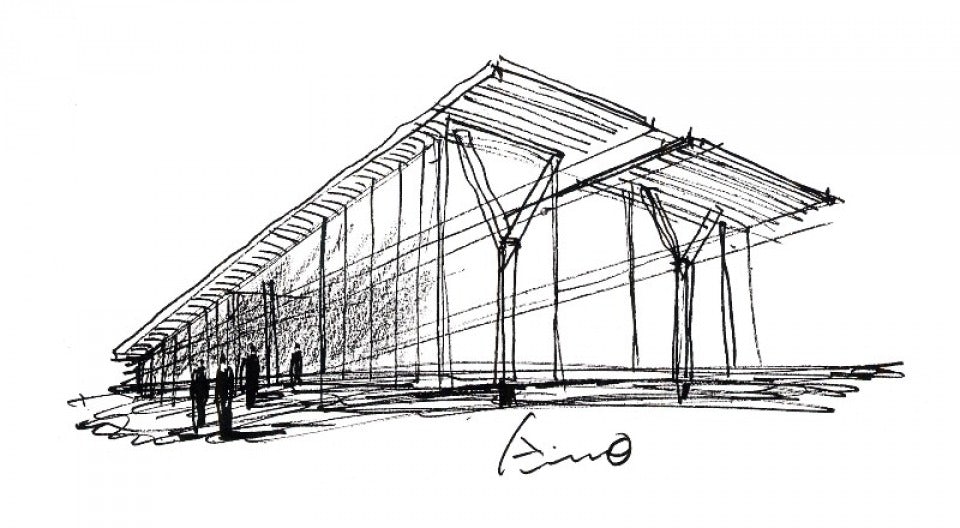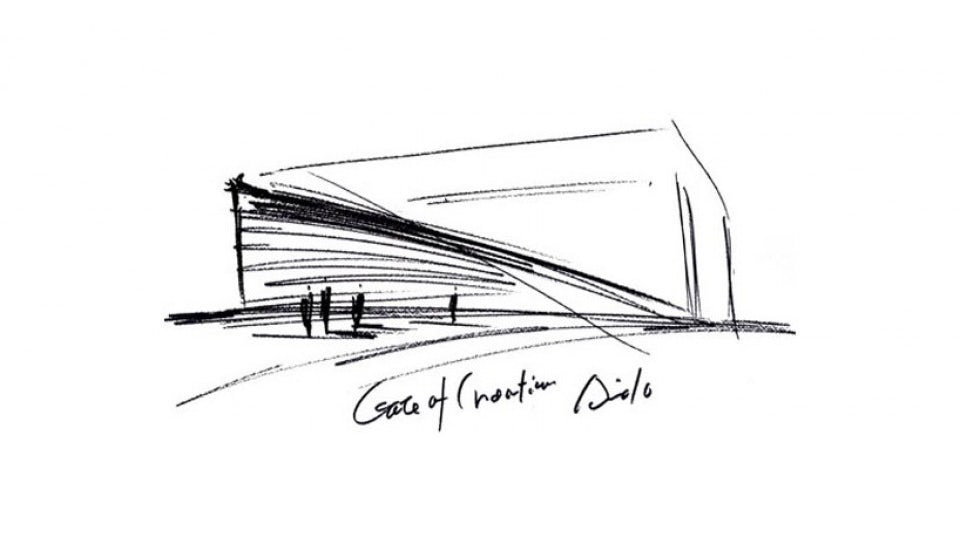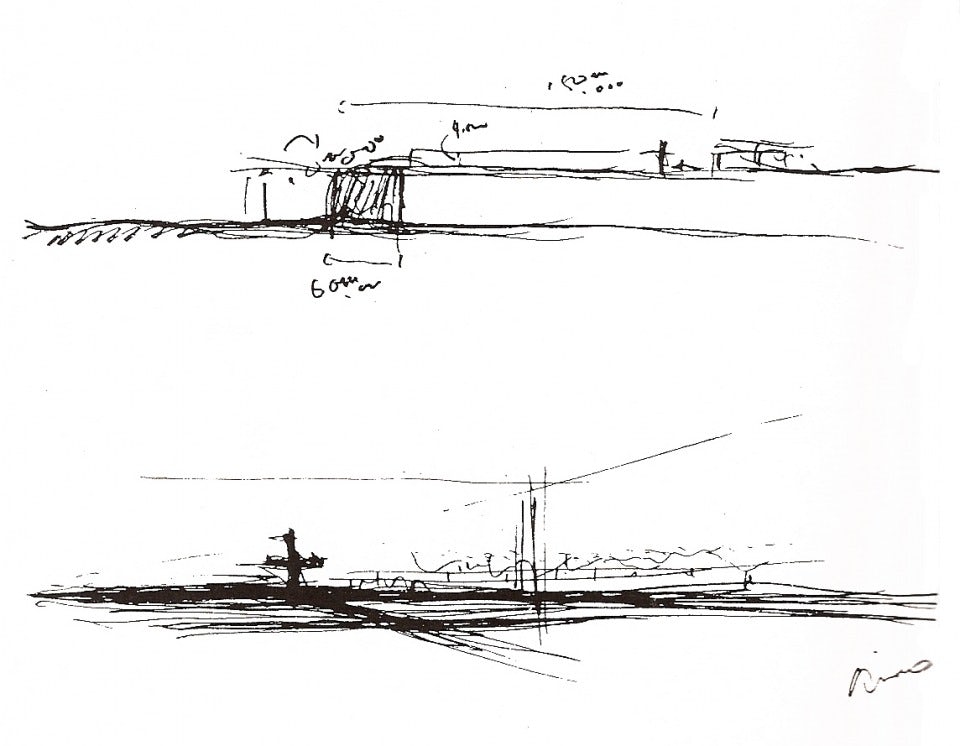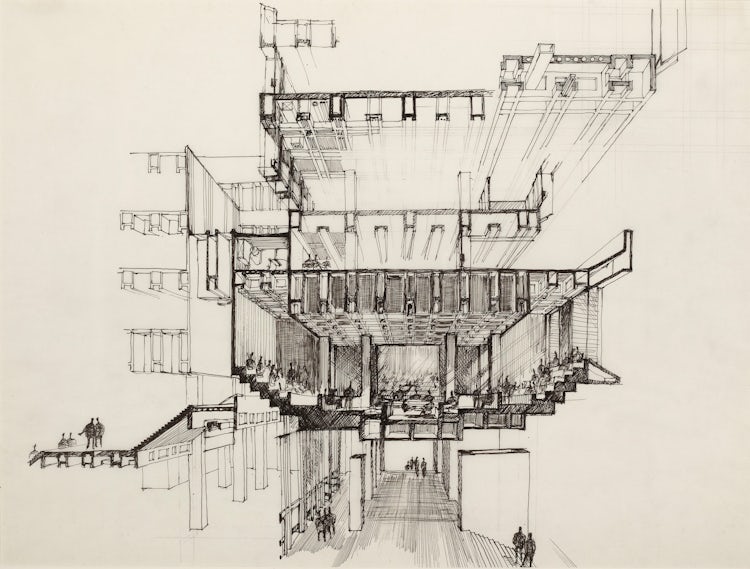Sign up for the next One Drawing Challenge to be informed when the next competition opens for submissions: One Drawing Challenge. Be sure to check out the incredible work by this year’s finalists.
Following the vibrant watercolors of Steven Holl and the precisely penciled musings of Le Corbusier, the sketches of Tadao Ando go back to the basics of architectural sketching. Flying in the face of the esoteric gestures of many architects, the Japanese architect’s drawings get straight to the point: They are simplistic in the extreme, an epitome of the restrained, minimalist style for which the king of concrete is renowned.
Key gestures — the cross of a chapel, a plain concrete wall, a shaft of light — are emphasized as singular motifs within each drawing, with other details deemed unnecessary in illustrating Ando’s distilled concepts. They offer a glimpse of the understated magic found within the architect’s finished buildings, encapsulating his belief that light, shadow and space should be prioritized over our preoccupation with material forms in the design process.
Scroll through the pages of Tadao Ando’s sketchbook below, which offer a tantalizing glimpse of many of the architects’ most iconic works.

Modern Art Museum of Fort Worth, Texas; via The Modern Art Museum of Fort Worth

Modern Art Museum of Fort Worth, Texas; via Kemuels design studio

Punta della Dogana Contemporary Arts Center, Venice; via wikiarquitectura

The Pulitzer Arts Foundation, St. Louis, Mo.; via ArchDaily

Roberto Garza Sada Center for Arts, Architecture and Design, Monterrey, Mexico; via designboom

Morimoto Restaurant, New York City, New York; via CoolBoom

Church on the Water, Tomamu, Hokkaido, Japan; via architecturalogy

152 Elizabeth Street, New York City, New York; via Architizer
For more on Tadao Ando and his unique creative process, read this fascinating interview in which the Japanese minimalist discusses the emotional power of architecture, and take a moment to explore the hidden treasures of Art Island, home to numerous Ando classics.
Top image: Ando sketching in his studio; photograph courtesy of Kaita Takemura
Sign up for the next One Drawing Challenge to be informed when the next competition opens for submissions: One Drawing Challenge. Be sure to check out the incredible work by this year’s finalists.




